|
|
General: ¿ESTADOS UNIDOS DE AMERICA O ESTADOS UNIDOS MEXICANOS LLEGO A LA LUNA?
Triar un altre plafó de missatges |
|
|
 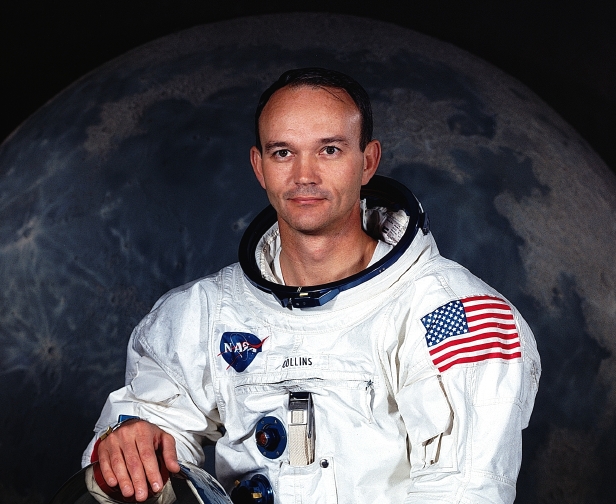
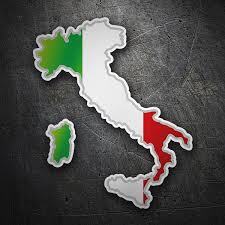  
Hércules (constelación)
De Wikipedia, la enciclopedia libre
Recibe su nombre del héroe mitológico, Hércules y es la quinta en tamaño de las 88 constelaciones modernas. También era una de las 48 constelaciones de Ptolomeo.
[editar] Características destacables
No tiene estrellas de primera magnitud, siendo la más brillante β Herculis con magnitud 2,78. μ Herculis se encuentra a 27,4 años luz de la Tierra. El Ápex solar (punto del cielo que indica la dirección hacia la que se mueve el Sol en su órbitaalrededor del centro de la galaxia) se encuentra en Hércules, cerca de ξ Herculis.
[editar] Estrellas principales
- α Herculis (Ras Algethi o Rasalgethi), de magnitud 3,31, es un sistema estelar triple, cuya estrella principal es una gigante roja variable.
- β Herculis (Kornephoros), la más brillante de la constelación con magnitud 2,78, una estrella gigante amarilla.
- γ Herculis, gigante blanca de magnitud 3,74. Es una binaria espectroscópica con un período orbital de 11,9 días.
- δ Herculis (Sarin), estrella blanca de magnitud 3,12; es una estrella binaria cuyas componentes han sido resueltas por interferometría.
- ε Herculis, binaria espectroscópica de magnitud 3,91.
- ζ Herculis, la segunda más brillante de la constelación con magnitud 2,89, estrella doble formada por dos estrellas amarillas de desigual brillo.
- η Herculis, gigante amarilla de magnitud 3,49.
- θ Herculis, gigante luminosa naranja de magnitud 3,85.
- ι Herculis, subgigante azul de magnitud 3,79; tres estrellas más completan este sistema estelar cuádruple.
- κ Herculis A y κ Herculis B, dos gigantes que forman una doble óptica.
- λ Herculis (Maasym), gigante naranja de magnitud 4,40.
- μ Herculis, sistema estelar cercano que dista del Sistema Solar 27,4 años luz.
- π Herculis, gigante naranja de magnitud 3,16.
- ρ Herculis, estrella doble cuyas componentes, separadas 4 segundos de arco, brillan con magnitud 4,56 y 5,42.
- τ Herculis, estrella B pulsante lenta (SPB) con una tenue compañera a 7,6 segundos de arco.
- χ Herculis, enana amarilla de baja metalicidad que se encuentra a 52 años luz de distancia.
- ω Herculis (Kajam), de magnitud 4,57.
- 8 Herculis, estrella blanca de magnitud 6,13 que forma una doble óptica con Kappa Herculis —separación 0,2º—.
- 14 Herculis, enana naranja a 59,2 años luz con una enana marrón o planeta gigante alrededor. En 2006 se descubrió un posible segundo compañero, aún sin confirmar.
- 30 Herculis (g Herculis), gigante roja y variable semirregular cuyo brillo oscila entre magnitud 4,3 y 6,3 en un ciclo de 89,2 días.
- 68 Herculis (u Herculis), binaria eclipsante en donde existe transferencia de masa desde la secundaria hacia la primaria.
- 72 Herculis (w Herculis), enana amarilla similar al Sol a 47 años luz de distancia.
  
ISLA SAN GIORGIO (VENECIA)=GEORGE LEMAITRE
GEMATRIA EN INGLES DE SEED=33
GEMATRIA EN INGLES DE GATE=33
SARA (CE-SAREA DE FILIPO)=PARALELO 33
"¡Oh profundidad de las riquezas de la sabiduría (sophia)
y de la ciencia (gnwsiV, gnosis) de Dios!
¡Cuán incomprensibles son sus juicios, e inescrutables sus caminos!"
(Romanos, 11: 33).
25 DE ABRIL=DIA DE SAN MARCOS
22 DE JULIO=DIA DE MARIA LA MAGDALENA
|
|
|
|
|
 Ilustración que representa a santo Tomás en la India
Eusebio de Cesarea (Historia Ecclesiastica, III.1) cita un texto de Orígenes, que vivió en la primera mitad del siglo iii, en el que afirma que Tomás fue el apóstol de los partos. Sin embargo, Tomás es más conocido como evangelizador de la India (al este de Partia), según se relata en los Hechos de Tomás (hacia 200). En Edesa, donde se veneran sus reliquias, el poeta Efrén el Sirio (muerto en 373) escribió un himno, en que el diablo exclama:
...¿En qué lugar escaparé del justo?
Incité a la Muerte a que acabase con los Apóstoles, para escapar así a sus golpes. Pero ahora se me golpea aún más duramente: el Apóstol del que escapé en la India me ha alcanzado en Edesa; aquí y allí me encuentro con el mismo.
Allí donde yo voy está él: aquí y allí lo encuentro, para mi desgracia.
Se han conservado varios himnos al apóstol Tomás, atribuidos a Efrén el Sirio, en códices de los siglos VIII y IX, que transmiten la tradición según la cual los restos de Tomás fueron llevados a Edessa desde la India por un mercader. Las reliquias, según la citada tradición, obraron milagros tanto en la India como en Edessa.
Las diversas denominaciones de los modernos Cristianos de Santo Tomás creen, según una tradición no escrita que según ellos se remonta a finales del siglo ii, que Tomás desembarcó en Kodungallur en el año 52, y fundó las iglesias popularmente conocidas como 'Ezharappallikal' (Siete Iglesias y Media). Estas iglesias eran las de Kodungallur, Kollam, Niranam, Nilackal (Chayal), Kokkamangalam, Kottakkayal (Paravoor), Palayoor (Chattukulangara) y Thiruvithamkode (la media iglesia).
Los Hechos de Tomás describen, en su capítulo 17, la visita de Tomás al rey Gondofares, en el norte de la India. Según este texto (capítulos 2 y 3), Tomás viajó a la India por mar. Que tales viajes eran posibles es conocido a través de textos como el Periplo del Mar Eritreo. En 1872 se descubrió que el rey Gondofares había existido realmente, y había reinado entre los años 21 y 47. Posiblemente, el autor de los Hechos de Tomás manejó datos históricos fidedignos en lo referente a la India; esto, no obstante, no constituye prueba alguna de historicidad en lo referente al supuesto viaje del apóstol.
Según la tradición, Tomás sufrió martirio en la India el 3 de julio del año 72. Por esa razón su festividad se celebra el 3 de julio.
En el siglo xvii el matemático e historiador mexicano Carlos de Sigüenza y Góngora defendió que el apóstol Santo Tomás había predicado en las Indias, no en la India, y que su recuerdo se habría transformado en los nativos prehispánicos en la figura de Quetzalcóatl. En 1790, al descubrirse en la Plaza de Armas de la Ciudad de México, importantes reliquias prehispanas, la estatua que se identificó con Coatlicue y la Piedra del Sol o Calendario Azteca, el abogado mexicano José Ignacio Borunda,15 retomó estas teorías, creyendo encontrar en el análisis de esos documentos históricos confirmación a la identificación de Santo Tomás con Quetzalcóatl, asegurando además que el manto de la Virgen de Guadalupe era en realidad la capa de Santo Tomás Quetzalcóatl en la que la Virgen en persona habría impreso su huella. Estas suposiciones fueron aceptadas y defendidas por el padre dominico Servando Teresa de Mier en un sermón que pronunció ante el arzobispo de México y el virrey de la Nueva España el 12 de diciembre de 1794, en la Insigne y Real Colegiata de Nuestra Señora de Guadalupe, en la solemne festividad de la milagrosa aparición de dicha santa imagen, produciendo una gran conmoción (en tanto negaba la milagrosa aparición de la imagen) que llevó a que se abriera un proceso, en el que se desautoriza por extravagante la suposición de hacer al apóstol Santo Tomás en la América del siglo i.16
Leyenda de Santo Tomás (Pa’i Sumé) en Paraguay
Un antiguo relato indígena narra que, mucho tiempo antes de la llegada de los conquistadores europeos, anduvo por América un hombre alto, de barba blanca y gran sabio, llamado Sumé o Tumé (Avaré Sumé marangatú) que vino a enseñar el arte de la agricultura, a sembrar el maíz y la mandioca y sobre todo enseñó las virtudes y uso de la yerba mate. Terminada su misión se volvió al mar, dejando huellas de sus pisadas. Estas se encuentran en diversos cerros (Tacumbú en Asunción, Santo Tomás, Cristo Rey en Caacupé y Yaguarón, entre otros) del Paraguay y son llamadas Santo Tomé pyporé. Así) en diversos cerros: … Pa'í Sumé es un héroe cultural de los guaraníes, adaptado por los primeros misioneros cristianos, quienes lo identificaron con Santo Tomás, que se había adelantado para preparar la venida de ellos. Los nativos usaban, para sus viajes a la costa y al Paraguay, un sistema de caminos conocido con el nombre de «Peavirú», y también con el nombre de «Camino de Santo Tomás», que marcaba los lugares por donde anduvo Tumé. El cacique Marakaná, del Guairá, relató la leyenda de Pa'í Tumé a los Padres Cataldino y Mazzeta.17
Tomás en la Literatura
[editar]
El escritor peruano Ricardo Palma, autor de las llamadas Tradiciones peruanas realizadas en el siglo xix, escribió una donde recoge la idea de que Santo Tomás también estuvo en esa nación americana. Se trata de su historia titulada La sandalia de Santo Tomás, publicada por primera vez en 1877 en la cuarta serie de tradiciones.18
|
|
|
|
|
New Year's Prophecy
Intertemporal Perspective via 2016 Tower & Star Rituals
By Goro Adachi
December 30, 2016

Century II - 41
The great star will burn for seven days,
The cloud will make two suns appear:
The large mastiff will howl all night
When the great pontiff changed territory.
- Nostradamus
Not all New Year's Days are created equal and this one coming up happens to be a special one. The previous one was special as well, both being attached to the year 2016, the point of no return. And if the pattern holds, we are in for a whole new set of inter-temporal "clues" which, if decoded properly, should be quite prophetic in nature. Decoding these things happens to be my specialty, or obsession...
It's telling that The Economist's annual, end of the year crystal ball edition features a cover with tarot cards. Obviously they were inspired by the irresistible combination of "Trump" (cards) and the idea of divination (predicting the future). Not too surprising there. (What is surprising though is how most people trying to "decode" it can't even crack the first step: The only two tilted cards, "Judgment" and "The Star", are card #20 and card #17 per tradition, spelling out "20-17" or "2017".)
The Economist is actually a bit late to the party as there was a whole lot of foreshadowing going on last year through the tarot symbolism on New Year's Eve/Day (2015/2016). It came in the form of Dubai's tower inferno evoking the Tower card numbered 16 (as in 20 16)...
...in effect foreshadowing the earthshaking rise of "Trump" who famously lives in Trump Tower (= Tower trump card).
Extending the pattern forward in time would have the new year 2017 correspond to tarot card #17 - " The Star".
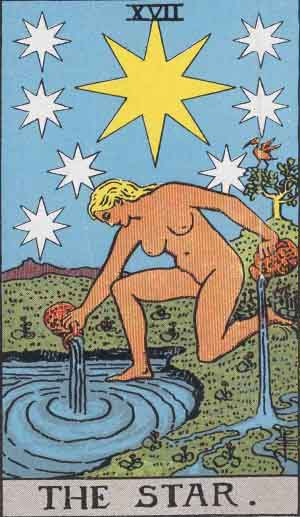
It would most certainly be Sirius on New Year's Eve/Day as a magical celestial moment arrives every year when the brightest star in the night sky "culminates" due south reaching its highest point right around midnight on New Year's Eve/Day.
But as I said, it's extra special around 2016. I'm quite aware of this, and it seems so was Nostradamus. Let me introduce you to quatrain II-41, or as I like to call it the "Sirius quatrain":
Century II - 41
La grand' estoille par sept jours bruslera,
Nuee fera deux soleils apparoir:
Le gros mastin toute nuit hurlera,
Quand grand pontife changera de terroir.
The great star will burn for seven days,
The cloud will make two suns appear:
The large mastiff will howl all night
When the great pontiff changed territory.
- Nostradamus
Right now it is highly relevant and timely as shown below:
Line 1: The great star will burn for seven days
Being the brightest star in the night sky, Sirius certainly qualifies as a "great star". It "burns" in the sense that the name "Sirius" means "scorcher" plus the phrase "Dog Days of summer" derives from Sirius's nickname "Dog Star". Even the "seven days" (sept jours) part relates to Sirius in that ancient Egyptians called the star Spd, Spdt, or Sept, resonating with the French sept meaning "seven. ("Seven days" can also allude to the 7-day festival Saturnalia, Dec 17-23.)
Line 2: The cloud will make two suns appear
In esoteric tradition Sirius has been considered the "second sun".
Line 3: The large mastiff will howl all night
Sirius is the "Dog Star" ("mastiff") and it "howls all night" on New Year's Eve/Day by being visible all night long. (Culminating around midnight implies being visible from dusk to dawn.)
Line 4: When the great pontiff changed territory
The last time there was a change in the papacy was back in 2013 when Pope Benedict XVI stepped down and Pope Francis took over. Unbeknownst to most, it managed to multicontextually encode an arrow pointing ahead to the year 2016:
- Pope Benedict XVI is "16" (XVI), numerically resonating with 2016 and the Tower card (XVI)
 
- Pope Francis's first foreign trip ("changing territory") as head of the Catholic Church was to Rio de Janeiro, Brazil in July 2013, where the Summer Olympics would take place in 2016
 Aug 05, 2016 Rio Olympic Games begin
- A geo-alignment pinpointing Rio was implied via Pope Benedict XVI's resignation announcement taking place concurrently with a major meteor impact event in Russia
Feb 11, 2013: Pope Benedict XVI announces resignation Feb 15, 2013: Major meteor impact in Chelyabinsk, Russia 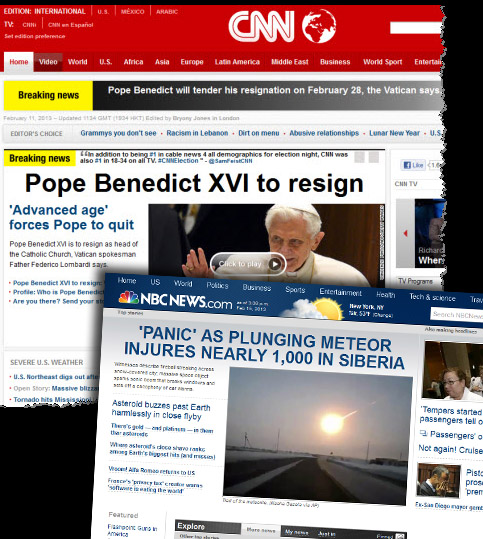 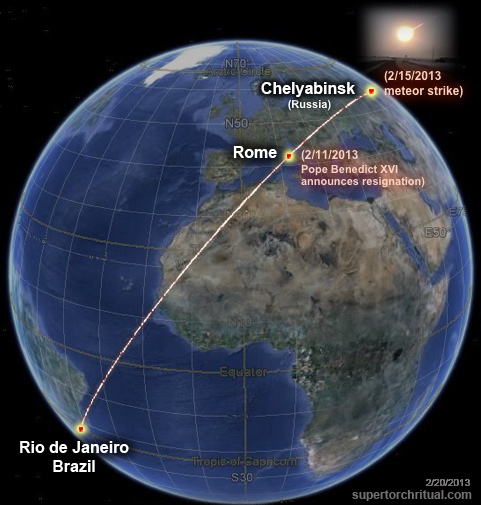 In the context of the "Sirius quatrain" II-41, it makes a lot of sense for Rio to be highlighted in this manner. It has to do with the real, hidden reason behind the name "Rio de Janeiro" or " River of January" which I'm revealing here for the first time anywhere (aside from STRUG/members section which is always ahead)... Firstly, the term " January" (Janeiro) derives from Janus the god of beginnings, endings, time, and doorways. Basically a perfect set of descriptions for New Year's Eve/Day (= beginning of January).
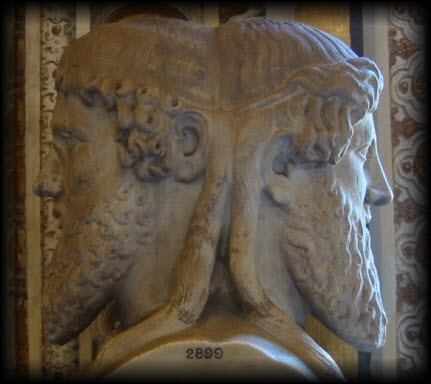
And it just so happens it's right around New Year's Day, when Sirius "howls all night", that Rio and the Sun are aligned in terms of latitude & declination. In other words, the Sun is directly overhead at noon in Rio right around New Year's Day. Rio in this way indeed is a "city of Janus/January"!

As above, so below... Sirius is the " New Year's star" above, Rio de Janeiro is the " New Year's city" below. Having established this and 2016 being the year of the Rio Olympics, we can then quite easily infer that the beginning and ending of 2016 are of special, "ritualistic" significance. We already saw this in action at the beginning of 2016 (Dubai tower fire), and we are now about to witness something at the end of 2016. The straightforward expectation would be that it would reflect " The Star" card - #17 representing "2017" - just as the Dubai tower inferno was a simulation of the "Tower" tarot card, #16. This would mean it would likely involve Sirius on New Year's Eve/Day. (I may actually already know the ritual taking place, but I'll save it for another article, perhaps early next year.) There is another approach here to discerning the nature of the end of 2016 "ritual(s)". It has to do with the fact that Rio and the Sun are also aligned on ~December 10th (equidistant from the solstice).
That "preview" window precisely coincided with a major geopolitical flareup stemming from the apparent Russian cyber attacks against the US during the 2016 presidential election.
 It's an ongoing situation, happening in real time as I write this and it wouldn't be surprising if we hear more about the US retaliation against Russia around the New Year's Eve/Day weekend, such as actual US cyber attacks against Russia.
(I've consistently pointed to the significance of the Russian cyberwar situation since the very beginning. See: Jul 26 tweet, Jul 27 tweet, Jul 30 tweet, Aug 30 update. Here we are, it's like the Cold War has returned.) Saturnalia (Dec 17-23) was another important window we were watching very closely... (Saturnalia starts on Pope Francis's birthday, by the way.) My tweet from Nov 24:
And it was intense indeed...
Notable as it connects right back to the 2015-2016 New Year's Eve/Day "ritual". The name "Dubai" means "market". And the fire there took place right next to the Dubai's spectacular New Year's fireworks.
Makes us wonder if these constitute an omen foreshadowing a major market/financial event coming in the New Year.

I'm going to end this article here, but really we've just scratched the surface. Just the tip of the iceberg for what's unfolding... because 2016 was a tipping point, the point of no return. We didn't even touch on the earth changes and the sixth mass extinction already being discussed on STRUG...
https://www.goroadachi.com/etemenanki/newyears-prophecy.html |
|
|
 Primer Primer
 Anterior
47 a 61 de 61
Següent Anterior
47 a 61 de 61
Següent
 Darrer
Darrer

|
|
| |
|
|
©2025 - Gabitos - Tots els drets reservats | |
|
|

